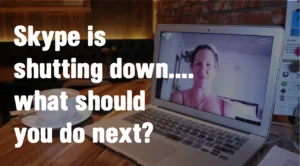
Setting up BLF keys on your Yealink T1x, T2x, T3x or T4x handset in 4 simple steps
- on VoIP Phones
If you have any other model of Yealink handset including the new T5x series, please see our other articles.
BLF is not available on DECT devices, such as the W52P, W60P or W41P.
What is BLF?
BLF stands for Busy Lamp Field and is a great feature, particularly for teams working remotely. Have you ever found yourself in a position where you need to make or transfer a call to a remote colleague but you don’t know if they’re already on the phone? This is where the Busy Lamp Field comes in…
The BLF keys on your phone will allow you quickly see the phone status of that person. Each BLF key shows the status for an individual extension/user on the phone system so if you’ve got 5 people in your team, you’ll need 5 BLF keys.
GREEN means the person is available to take the call and RED means they’re not. Simple.
The below procedure will take you through setting up BLF keys on the following handsets: T19, T20, T21, T22, T23, T27, T28, T29, T30, T31, T33, T40, T41, T42, T46 and T48.
Step 1
Obtaining the Handsets IP Address
To login to the interface of your Yealink, you’ll need the internal IP Address.. this can be found by pressing the OK button (Or Menu > Status), in the middle of the four arrow keys.
Step 2
Navigating to the Handsets Interface
Now, from a computer on the same network as the handset, you can browse to the IP Address.. to do this, simply open your web browser and type the IP Address into the address bar, like so;
If all is well and good, you should now have a login screen.. like so;
If your phone was sourced through Invoco and you don’t have your login credentials, reach out to the Support Team.
Step 3
Configuring the DSS Keys (BLF, Speed Dial, etc)
Once logged in, the interface should look something like this.. you’ll need the page that is labelled ‘DSS Keys‘.
The DSS Keys are the buttons beside your screen, model dependant you may have anywhere from 2 of these buttons or 10.
Higher-end handsets with more buttons have three pages of these keys, so a phone with 10 physical line keys actually has 27 available slots
(the last button on each page becomes the ‘next page’ key)
We’ve got plenty of functionality in these keys depending on your requirement.. to name the most common;
BLF – Busy Lamp Field effectively monitors your colleagues handsets to see whether they are available, or busy on another call.
Speed Dial – useful if you find yourself dialling the same numbers and don’t want to manually enter the number over and over.
Step 4
Adding a BLF key
To set up a DSS line button as a BLF key, you’ll need to configure this as follows;
Line Key Type: BLF
Value: Extension Number (i.e 3060)
Label: Name (i.e John)
Line: Line1 (Default)
Extension: Extension Number (i.e 3060)
Job done!
Should you run into any problems whilst following this guide, please don’t hesitate to get in touch with our support team.
01527 306001 support@invoco.net
- Posted on:
You might also like to read


How to whitelist Invoco emails








